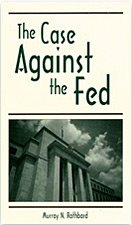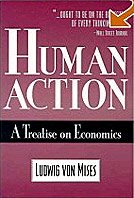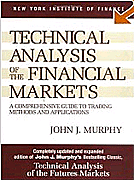Gold Digger
from Fund Strategy
by Vanessa Drucker
Where were the gold bugs in 2001, when the metal touched a low of $255 an ounce? Long snuggled deep in the mattress, they began to creep out as the metal price rose. It reached a plateau in 2004 in the $400 range, and then took off in earnest after July 2005.
The gold bugs refuse to concede that we could be in a speculative blow-off phase of frothy glitter. They point to the 1980 high watermark at $877 an ounce, and claim that price would convert to more than $2,000 (£1,000) today.
Notwithstanding, there are plenty of reasons to be cautious, or even downright bearish, at today's lofty levels. A host of factors already signal a potential turn in the multiyear uptrend.
A confluence of disparate drivers has always buoyed or buffeted gold. Since about 2004, the mix of these drivers has shifted, with implications for the price action. Today, the critical factors are: the dollar; economic uncertainty; supply/demand forces; and the new-found popularity of the exchange traded funds. A look at how these factors are evolving may shed some light on where the gold price is heading next.
"We remain wedded to the view that the US dollar is the principal, longer-term driver of the gold price," says James Steele, chief commodities analyst at HSBC. He expects the relationship to continue as long as the dollar remains the world's reserve currency.
Gold, widely regarded as a hedge against a falling greenback, has performed an intimate inverse dance with the dollar over the past 40 years. Turning points coincided in 1976, 1982, 1988, 1994 and 2000. While the correlation remains high at 0.91, the two asset classes do not move exactly in lockstep. "If they did, we could do without precious metals traders," Steele says. "We could just trade foreign exchange."
Dan Smith, gold analyst at Standard Chartered, notes that a less linear relationship has developed over the past six months. Incremental dollar weakening keeps boosting the gold price, while dollar rallies barely affect the metal.
"It may show that people are steadily building long-term gold positions as they piggyback on dollar weakness," suggests Smith.
Interest rate cuts by America's Federal Reserve, instituted to boost a sagging economy, highlight the gold/dollar linkage. For example, on January 22, 2008, the Fed surprised markets with its announcement of a dramatic three-quarter point cut. That news rapidly depressed the dollar, as gold soared through $900.
"Real interest rates and the dollar are two sides of the same story. When people refer to inflation shocks, they are also describing a drop in real interest rate environments," says Michael Lewis, global head of commodities research at Deutsche Bank. He points out that as long as real rates run 2.5% or lower, as they did in the 1970s, gold performs well. At the moment, inflation appears poised to climb, while the dollar loses real interest rate support.
Yet the role of inflation is not straightforward. To the extent that gold remains denominated in dollars, yes, it embodies an inflation hedge. At the same time, the perceived correlation between gold and inflation is probably a carryover from memories of the 1970s and 1980s. When we examine more recent patterns of American inflation, we observe that core inflation fell from 3.38% in 2000 to 2.83% in 2001, and then down to 1.59% in 2002, according to monthly rates published by the Bureau of Labor Statistics.
Gold barrelled up and up during those years. From 2005 to 2007, inflation skidded from 3.3% to 2.85%. Gold kept ascending, at an even more feverish pace.
Political and economic risk and instability of all stripes is another prime driver. In its long-standing role as a safe haven asset, gold can react to any type of turmoil that strikes on the world stage. "It is not even the type of risk that matters, but rather the severity," Steele comments. When the credit markets seized up last August, why should gold then have fallen initially? The reason, it transpired, was that many investors, who needed liquidity, were selling their gold. Once again, the metal was duly performing its function.
Looking back, from 2001 through 2005, financial and political deterioration was building on all sides. At the same time, many investors still regarded the environment as a temporary blip that would soon readjust. It did not. By 2007, the economic uncertainty dwarfed that of the previous six years, as the subprime crisis, real estate weakness and financial illiquidity came together in a perfect storm.
Compared with economic dramas, reverberations from geopolitical incidents barely qualify as second order events.
"The idea that events such as terrorist attacks provide much catalyst has largely been discredited," says Andrea Hotter at Dow Jones Newswires. She points to the London underground bombings, and even the 9/11 terrorist attacks, as examples of incidents that produced fleeting reactions in the gold price.
Other fears prompt hoarding. It is worth noting that certain Middle Eastern investors, as well as central banks of countries that may be suspicious of American policies, have also been storing gold. "In the post 9/11 environment, some of them fear having their US accounts frozen, if there is a link to terrorist activity. So they invest in gold and other alternative assets," says David Thurtell, metals analyst at BNP Paribas. Similar behaviour occurred in the aftermath of the American hostage drama in Tehran in 1979.
Like all commodities, supply and demand must balance to clear the gold price. From the supply side, consider the case for "peak gold". Until it was overtaken by China, South Africa was the world's largest producer, providing more than 1,000 tonnes a year in the 1970s. Its output has contracted to 248 tonnes a year because of ageing mines, which are deeper and harder to access, and new legislation.
"Before, mine owners had the right to exploit their holdings easily, but now they need to obtain licences and agree to create jobs, undergo environmental audits and build schools and hospitals," says Ross Norman, director of TheBullionDesk.com.
Supply constraints got worse this January, when Eskom, a South African state utility, declared wide-ranging power cuts, forcing mines to close their operations for safety reasons. Many of the mines extend five kilometres below ground and rely on lifts and electricity. If Eskom cannot ensure uninterrupted power supplies, the mines cannot take the chance their workers might be trapped underground.
Mark Bristow, president of Randgold Resources, focuses on attracting first world capital to reinvest in African mining projects in Ivory Coast, Mali and Tanzania. He describes how cost and risk profiles have changed as "across the board, miners constantly run into first world intervention". Resistance from green movements has made mining more challenging in places such as Canada, America and Australia, and shifted the focus to emerging markets.
Production is also falling in Australia and Canada. "Even in China," says Norman, "where they are going for the richer grades, they may have exhausted their mines by about 2014."
Also affecting production are a dire shortage of mining equipment, inadequate infrastructure and a dearth of professional skilled labour at all stages of the production process. Steele says the global commodities boom has strained the supply chain and compelled the gold industry to compete with coal, base metals and other precious metals for "scarce human and material resources".
In another ongoing trend, the larger gold miners have been buying back their hedge books. Smaller operations may still be hedging to obtain finance, since banks are not necessarily willing to lend if they fear the commodity's price might collapse.
The miners have undergone a massive mindset change since the late 1990s. "In the past, they used to sell forward into every rally and kill it, and the price would sink. Now they let the price levitate higher as it goes from elastic to inelastic," says Norman.
The real sea change is the conduit forged between the gold markets and the investment world. The physical gold market itself is small, "but the derivatives traded on its back are huge", Bristow points out.
"Despite the dehedging programmes, about 39m ounces of gold are still hedged in paper, and that must be delivered."
Hitherto, trading had been focused on the Comex in New York, the Tocom in Tokyo and the London spot interbank market. Now, exchanges are racing to open their doors to gold trading across a much broader jurisdiction. In January 2008, a new futures market was added to the two spot exchanges in China, along with new platforms in Dubai, India, Singapore and Vietnam.
The chief catalyst of demand is the development of the various new exchange traded gold funds, beginning in March 2003. ETFs, which must back the shares they issue with bullion, now command at least 10% of world demand, which is a quite a sprint from nothing, in five short years. Hotter explains that they are attractive to both institutions and individuals because they are so easy to invest in, with "no storage to arrange and no punt on the futures market."
Lyxor Gold Bullion Securities, Europe's largest gold exchange traded commodity, now holds 108 tonnes, with a value of about $3,186m. Overall holdings from all the gold ETFs constitute about 630 tonnes, which ranks them up there among the top 10 central bank holders, according to Jon Nadler, senior analyst at Kitco Bullion Dealers in Montreal.
In January 2006, David Davis, an analyst at Andisa Securities, famously described ETFs as the new "people's central bank - a force to be reckoned with". So far, the ETF money has tended to be sticky, apportioned 70% among individuals and 30% among institutions. "While central banks have been dumping gold, individuals have been quietly buying it and, even more amazingly, holding on to it," comments Owen Rees, head of business development, Europe, at Exchange Traded Gold, the World Gold Council's marketing arm for various ETFs.
Rees points out that the ETFs exhibit a volatility pattern similar to the S&Ps, compared with open interest on Comex, which "swings wildly". In mid-2006, when the gold sector corrected, the entire ETF franchise only lost about 3% of its assets, and then regained that value in about a month.
Those are the elements of the brew that has been simmering to keep the gold price soaring.
Is it ready to bubble over any time soon? That is the actionable question investors need to know. A quick survey of the drivers themselves - the dollar, the economic instability and supply and demand, especially investment demand - may reveal some clues as to why the price could head south.
If the fate of the dollar is the key determinant, much depends on its direction. While it has been in a long term downtrend, it is worth remembering that most dollar cycles last about seven years and this one is getting long in the tooth. "The dollar may continue to weaken against the euro to $1.60," suggests Lewis, "which could provide a last boost with overshooting and extreme misalignment." Every past cycle has ended with central banks coming to the rescue.
The currency team at HSBC holds a similar view. Based on purchasing power parity (how much it costs to buy the same items in different countries), it regards the euro as overbought already. It attributes much of the recent rally to capital inflows for the purchase of European equities, which are now quite expensive. Dollar bulls are beginning to emerge from the woodwork, though most agree that the Asian currencies will continue to pose formidable competition.
Next, look beyond the storm clouds gathered on the horizon. Imagine if the economic malaise began to clear up. At some point, the banks will finally write down the bulk of the subprime mortgages and leveraged loans that have triggered the credit contraction. Suppose that liquidity flows again in normalised patterns.
"When the credit markets settle, they will remove a supporting plank from gold," Steele predicts.
Even on the geopolitical front, there is some hope that military operations will wind down. Nadler believes we are now well into a speculative stage for gold - a last hurrah built on the post 9/11 anxiety premium. He says: "It began when the US invaded countries in the name of the war on terror, setting up an epic battle of religions, of good and evil. It snowballed over the past two years. Deficits mounted, with the haemorrhage of war expenditures. The panic may have peaked about the time Benazir Bhutto was shot."
Alternative asset classes have been commanding an increasing share of investors' portfolios as a method to boost risk-adjusted returns. At the same time, emerging markets, supported by the decoupling thesis, have been gaining popularity.
Part of the reason is that success breeds success, and those classes have generally outperformed. Yet commodities are no one-way street. Despite the ravenous appetite of emerging markets across the gamut, commodities remain volatile by nature. Nickel and zinc have fallen 50% from their 2007 highs. Copper has tumbled sharply and white sugar has declined from about 22 cents a pound in early 2006 to 14 cents this year.
How will the supply equation weigh up against the demand for gold? In a nutshell, jewellery fabrication demand is down, scrap sales are up, overall central bank sales are flat to sideways and investment demand is up - hugely so.
According to World Gold Council statistics, in the fourth quarter of 2007 the high price had a major impact on fabrication demand - most significantly in India, where identifiable tonnage demand fell by 17% from the year before.
Steele, who sailed with the Merchant Marines, uses a nautical metaphor. At sea, the first visible current is only 100 feet deep, moving on top of a massive subcurrent below. The shallow current is like investment demand - a driver for the gold price on any given day. The fabrication demand - the real bedrock - is like the current that flows beneath.
The supply story could also be ready to turn around. The mining community has spent more than $24 billion on exploration during the bull cycle, according to Nadler, and is now in a position to launch significant output. Between now and 2012, he foresees an increase of 25% a year. Whereas we are already seeing 2,200 tonnes of fresh mining output each year, by the end of that time-frame, expect a further 450 tonnes of additional supply. "Investors had better be willing to buy," Nadler warns.
Prospective buyers are not hailing from the central banks. Since the Washington Agreement established in 1999 that central banks could each sell 500 tonnes a year, many of the European institutions have been divesting their holdings. Many central bankers, newly minted MBAs, are keen to improve their investment returns, relying on equities and bonds instead. Their lending lease rates for gold are so low (about 0.35 for 12 months) that they have stopped lending it out altogether.
Only Russia, South Africa and Argentina are increasing reserves. The International Monetary Fund, whose 103m ounces of gold is second in quantity only to that of America and Germany, has announced plans to divest some of it soon.
Even the valiant ETFs may not be able to keep the party alive, but they helped to goose the price on the way up. They could add to selling pressure just as easily in the other direction. On January 16, the StreetTracks gold ETF dropped 21.5 tonnes in a record swoon.
Rees is not rattled. "It is the wrong question to ask, whether or not gold has gone too high," he insists. One should, of course, not always expect the price to go up, but should instead focus on assembling the right assets for protection, regardless of the economic environment. Studies from the World Gold Council demonstrate that gold is a more reliable diversifier than other commodities, and together with platinum exhibits the least volatility.
Rees adds: "We want people to invest responsibly, and we believe we can offer a sensible way to use a low-cost product."
Why gold?
King Midas learned the hard way. In India, people still eat it as a blood cleanser and use it as an aphrodisiac. John Maynard Keynes dismissed it as a barbaric relic. Many are curious as to how gold maintains its significance in a world driven by fiat currencies. Whatever the reasons, Joseph Schumpeter, the economist, acknowledged its predictive function as a barometer: "The modern mind dislikes gold because it blurts out unpleasant truths."
  |
Labels: gold, mining, mining stocks















![[Most Recent Quotes from www.kitco.com] [Most Recent Quotes from www.kitco.com]](http://www.kitco.com/images/live/t24_au_en_usoz_6.gif)
![[Most Recent Quotes from www.kitco.com] [Most Recent Quotes from www.kitco.com]](http://www.kitco.com/images/live/au_go_0030_ny.gif)
![[Most Recent Quotes from www.kitco.com] [Most Recent Quotes from www.kitco.com]](http://www.kitco.com/images/live/au_go_0365_ny.gif)
![[Most Recent Quotes from www.kitco.com] [Most Recent Quotes from www.kitco.com]](http://kitconet.com/charts/metals/silver/t24_ag_en_usoz_4.gif)

















0 ΣΧΟΛΙΑ (COMMENTS):
Post a Comment
<< Home